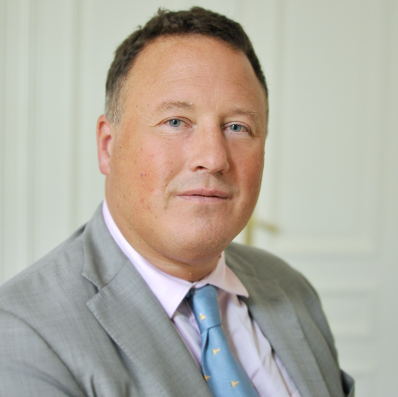“This is a new tool. It gives us new hope to stop Ebola more quickly” says Dr Mike Ryan, Assistant Director-General for Emergencies, World Health Organization. He is speaking from Equateur Province in the Democratic Republic of Congo (DRC), the frontline in a battle to prevent a new epidemic of this deadly viral haemorrhagic fever (see video clip).
In 2014 – 2015 an Ebola epidemic ravaged West Africa. Over 11,000 people died, thousands more were sickened and whole communities were deeply traumatised as the epidemic threatened to spiral out of control. In 2018, though, Dr Ryan and his colleagues are quietly optimistic. “This is the first time we are starting a vaccination campaign in the middle of an Ebola outbreak, with an opportunity to stop Ebola”. It is too early yet to declare victory over Ebola in the 2018 outbreak in Equateur. But if this does turn out to be a famous victory, the experimental Ebola vaccine donated to WHO by US pharma giant MSD, may well play the role of hero. Deservedly so, if it works. But what health policy makers – and indeed developers of new vaccines – should also note is the huge efforts the Congolese authorities, WHO, UNICEF and their partners have put into persuading people exposed to Ebola to accept the vaccine.
Yes, you read that correctly. People facing a deadly outbreak still need to be persuaded to accept vaccination. Indeed, a minority of them will likely refuse it, no matter what the health authorities do.
One of the hard-learned lessons for WHO from recent epidemics is that the people you are trying to protect often don’t see things the same way as health experts. Developing a set of messages based on the medical science then pushing them out relentlessly doesn’t work.
Nowhere was this more clearly, and tragically, exposed than in the early stages of the 2014-2015 Ebola epidemic in West Africa. The strategy for containing the initial outbreak was to identify people who were sick with Ebola, identify everyone they had been in contact with and quarantine them all. What they communicated to communities affected by the outbreak was a set of medically correct set of key messages that ran as follows. “1. Ebola kills. 2. There is no treatment for Ebola. 3. If you or one of your family has been exposed to Ebola come to the Isolation Centre.” This achieved exactly the opposite of what the health authorities wanted. People who were ill and their contacts thought “if I am going to die from Ebola then I would rather die at home with my family. I don’t want to die on my own in an Isolation Centre.” As a result, communities hid sick people and their contacts from the outbreak control teams. Infections continued, and the outbreak gathered momentum.
The need to isolate people infected with Ebola and their contacts was obvious to the health experts trying to control the outbreak. It was not obvious to the communities in West Africa where the outbreak was taking place. Indeed being “isolated” seemed like a decidedly bad idea for people who thought they might be about to die. WHO and its partners in West Africa needed to explain their strategy and win the trust of the affected communities (rebranding the “Isolation Centres” as “Treatment Centres” and explaining that treatment increases your chances of surviving Ebola also helped…).
In the Ebola outbreak now taking place is Equateur Province of DRC, WHO and its partners are not assuming the benefits of vaccination – or any other of their interventions – are obvious to the communities at risk. In early June, WHO published a report showing the steps it and its partners (including the DRC authorities, MSF and UNICEF) are taking to understand the values, culture and beliefs of the various affected communities in Equateur. They are building alliances with local leaders, influencers and community groups to engage people and win their support. And they are making a big effort to understand the social, cultural and economic context of the different communities and ethnic groups in Equateur.
The lessons so far from the 2018 Ebola outbreak – and from the communication efforts around the experimental vaccine – have relevance beyond DRC. The concerns, questions and rumours faced by health officials deploying a new vaccine in DRC are, in essence, not much different from those they would face in Europe or North America. For example:
- People have concerns about the safety of the experimental vaccine (it is, after all, still experimental and so not yet extensively tested);
- Some people perceive that the authorities are exaggerating the risk posed by the Ebola outbreak;
- There are rumours about the vaccine having harmful side effects.
All of the above objections will be familiar to anyone involved in deploying the new vaccines given fast-track approval during the 2009 influenza pandemic. Indeed, they will be familiar to anyone involved in introducing human papilloma virus (HPV) vaccine to their national vaccine schedule in recent years, or in trying to raise increase coverage in their country against measles, mumps and rubella. The relatively high rates of vaccine hesitancy and vaccine refusal in some European countries is why the European Commission in April launched a policy initiative for an EU Recommendation to reinforce cooperation on vaccination in the EU (see my Cambre Insight article).
The days when communities and individuals meekly followed doctor’s orders are over in Europe, and indeed worldwide. Health authorities and healthcare companies that want to introduce new vaccines or treatment cannot assume their target public will automatically see the merit of what they are proposing. They need to use risk communication and community engagement to build support for it. The Commission’s proposed EU Recommendation on vaccination cooperation should help different stakeholders work together on this.
Read more about building trust and applying best practice in risk communication and community engagement in WHO’s 2018 guideline Communicating risk in public health emergencies.
